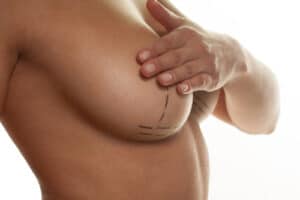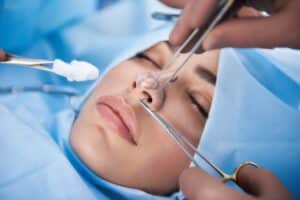The Empowering Benefits of Breast Enhancement Surgery
Breast enhancement surgery stands as a pivotal choice for individuals aiming to alter their appearance, boosting confidence and self-perception. This surgical procedure encompasses various techniques tailored to meet unique aesthetic goals, whether it’s augmenting size, refining shape, or restoring volume lost due to aging or childbirth. With advancements in medical technology ensuring higher safety standards and more natural results, the decision to undergo breast enhancement is increasingly considered by those seeking physical transformation. Understanding the nuances of this process is crucial for making an informed decision that aligns with personal health objectives and lifestyle considerations.
Overview of Breast Enhancement Surgery
Definition and Purpose
Breast enhancement surgery aims to alter breast size and shape. It boosts confidence for many. The purpose varies from reconstructive needs to cosmetic desires.
Individuals seek this surgery for various reasons. Some wish to increase their breasts’ size for aesthetic reasons. Others may need reconstruction after medical procedures like mastectomy.
Historical Evolution
The journey of breast enhancement began in the late 19th century. Early techniques were rudimentary and risky. Over time, surgical methods have evolved significantly.
In the 1960s, silicone implants marked a revolution in this field. Since then, advancements in technology have made surgeries safer with more natural results.
Popularity and Acceptance
Today, breast enhancement is highly popular worldwide. It’s widely accepted across different cultures and societies.
This acceptance has grown due to better outcomes and reduced stigma around cosmetic surgery.
-
More people openly discuss undergoing such procedures.
-
Social media influence plays a role in its popularity too.
Psychological and Physical Benefits of Breast Augmentation
Self-Esteem Boost
Many women report a significant improvement in self-esteem after breast enhancement surgery. This boost comes from feeling more comfortable with their body image. For some, it’s about aligning their physical appearance with how they feel inside.
Feeling good about one’s appearance can lead to increased confidence. This newfound confidence often spills over into various aspects of life, including social interactions and professional opportunities.
Better Fitting Clothes
Breast augmentation can lead to enhanced physical appearance by creating a more balanced figure. Many women find that clothes fit better post-surgery. This is because the procedure can help achieve proportionality between the breasts and the rest of the body.
The benefit here isn’t just aesthetic; it also simplifies shopping for clothes. Women often express relief at no longer having to tailor every piece of clothing or struggle with ill-fitting tops.
Relief from Discomfort
For women experiencing physical discomfort due to disproportionately small or large breasts, breast enhancement surgery offers potential relief. Large breasts can cause back pain, neck pain, and other issues related to weight strain on the body.
Reducing this strain can significantly improve quality of life for many women. It allows them greater freedom in activities and reduces chronic discomfort.
Types of Breast Implants and Augmentation Options
Saline vs. Silicone
Saline and silicone implants offer different benefits. Saline implants are filled with sterile salt water. They’re inserted empty, then filled once in place. This means potentially smaller incisions.
Silicone implants, on the other hand, are pre-filled with a silicone gel that feels more like natural breast tissue. Many women choose these for their natural feel.
However, should they leak, saline implant leaks are easier to detect as the saline solution is harmlessly absorbed by the body, unlike silicone which may require an MRI to detect leaks.
Shape and Texture
Implants come in round or teardrop shapes. Round implants make breasts appear fuller at the top, giving a more pronounced silhouette. Teardrop-shaped implants offer a more gradual slope and can look more natural.
The texture of an implant matters too. Smooth ones move freely within the breast pocket, mimicking natural movement better than textured ones do. Textured implants might stay in place better but have been linked to rare complications.
Placement Options
There are two main options: submuscular (under the muscle) or subglandular (over the muscle) placement of breast implants.
Submuscular placement offers a more natural contour as it hides the implant under both skin and muscle layers. This option might involve more pain post-surgery due to muscle stretching but tends to have fewer complications like capsular contracture.
Subglandular placement allows for easier recovery since it involves less manipulation of body tissues. However, this method might not be suitable for women with thin skin or little breast tissue as it could lead to visible rippling or implant edges.
Choosing between these options involves considering personal goals, body type, and lifestyle factors alongside professional advice from a surgeon experienced in breast enhancement surgery.
Procedure of Breast Enhancement Surgery
Surgical Steps
Breast enhancement surgery begins with a consultation. The plastic surgeon discusses your goals. They examine your chest wall and skin.
Next, you choose the type of anesthesia. Options include general anesthesia or IV sedation. Your surgeon will recommend the best choice for you.
The surgery starts with incisions. Common sites are under the breast, around the nipple, or under the arm. Each site has different implications for scarring and recovery.
The surgeon creates a pocket either behind the breast tissue or under the chest muscle. They insert the implant in this pocket.
Finally, they close incisions with sutures or surgical tape. A bandage is applied over your breasts to support healing.
Anesthesia Types
Two main types of anesthesia are used: general anesthesia and IV sedation.
-
General anesthesia puts you completely asleep.
-
IV sedation makes you drowsy but awake.
Your doctor decides based on health and personal preference.
Incision Sites
Incision choices affect scar visibility and implant placement:
-
Inframammary: Underneath the breast fold.
-
Periareolar: Around the nipple edge.
-
Transaxillary: In an armpit crease.
Each option has pros like less visible scars or cons like potential sensitivity changes in nipples.
Choosing an experienced plastic surgeon ensures safety and satisfaction with results from breast enhancement surgery procedures.
Risks and Safety of Breast Enhancement Surgery
Common Complications
Breast enhancement surgery carries several risks. Infection is a significant concern. It can delay healing and affect results. Scarring is another risk. Every surgery leaves marks, but poor healing can make them worse.
Implant rupture is a risk specific to breast implants. This means the implant breaks or leaks inside the body. Some signs include change in breast shape or size, pain, or lumps.
Long-term Safety
Long-term safety needs attention too. Implants might not last a lifetime. Many need replacing due to wear or complications.
Future surgeries could be necessary for various reasons like correcting issues from the initial operation or updating implants as they age.
The importance of choosing a certified and experienced surgeon cannot be overstated:
-
They minimize risks by following stringent safety protocols.
-
Their experience helps predict potential complications.
-
Certification ensures they meet high standards in their practice.
Choosing wisely could mean fewer complications and better outcomes.
Preparation and Recovery Process
Pre-Surgery Guidelines
Before undergoing breast enhancement surgery, patients must follow specific guidelines. These ensure the procedure goes smoothly.
Doctors often advise adjusting your diet weeks before the surgery. This might involve avoiding certain foods and drinks. Medications that increase bleeding risk, like aspirin, should be stopped as well. Lifestyle adjustments, such as quitting smoking, are crucial too. Smoking can affect how well you heal.
Patients should also prepare questions about the surgery’s risks and benefits. Understanding what to expect helps manage anxiety.

Recovery Timeline
The recovery process is key to successful breast enhancement surgery outcomes.
Initially, rest is essential for healing. Patients typically take a week or two off work. During this time, it’s common to experience some discomfort and swelling.
Following post-operative care instructions carefully speeds up recovery:
-
Keep surgical sites clean.
-
Avoid strenuous activities.
-
Wear support garments as advised.
Pain management is part of recovery too. Doctors usually prescribe medication for this purpose.
Minimizing Discomfort
To ensure a smooth recovery after breast enhancement surgery:
-
Follow all doctor’s orders closely.
-
Stay hydrated and maintain a healthy diet to promote healing.
-
Get plenty of rest but do gentle walks regularly to prevent blood clots.
Remembering these tips can make your recovery period more comfortable.
Results and Longevity of Breast Implants
Realistic Expectations
Understanding what to expect after breast enhancement surgery is crucial. The results will vary from person to person. Initially, there may be swelling and scars, but these generally fade over time.
Patients should anticipate a period of adjustment. It’s important to have realistic expectations about the new size and shape of your breasts. They might not look perfect immediately but will improve as you heal.
Implant Lifespan
Breast implants do not last forever. On average, they can last between 10 to 15 years. Several factors influence their longevity including implant type, placement technique, and individual body reactions.
It’s essential to know that future surgeries for revision or replacement might be necessary. This could be due to cosmetic reasons or implant-related complications like rupture or capsular contracture.
Revision Surgeries
Over time, some patients may decide on revision surgery either for aesthetic reasons or due to issues with the original implants. Being prepared for this possibility is part of having realistic expectations about breast enhancement surgery.
Revision surgeries can address concerns such as size change desires, aging effects on the breasts, or problems with the initial implants. While not everyone will need them, knowing they are a common aspect of long-term care is important.
Cost Considerations of Breast Augmentation
Breakdown of Costs
Breast enhancement surgery involves various expenses. Surgeon’s fees are a significant part of the cost. These fees vary widely based on experience and location. Anesthesia and facility charges also contribute to the total expense. Anesthesia costs depend on the procedure’s duration, while facility charges differ by location.
Implant type affects cost too. Silicone implants generally cost more than saline ones. The choice between these impacts your overall spending.
Insurance and Financing
Most insurers view breast augmentation as cosmetic, not covering it. Some plans might cover surgery related to reconstruction after mastectomy for breast cancer though. It’s important to check with your insurance provider.
For those without coverage, financing options exist. Many clinics offer payment plans or work with medical credit companies.
Implant Type and Technique
The implant type influences the final cost significantly.
-
Silicone implants are pricier but feel more natural.
-
Saline implants are less expensive but might feel less like natural breast tissue.
Surgical technique matters too.
-
Traditional methods may be less costly but involve longer recovery times.
-
Advanced techniques could increase costs due to specialized equipment or training required.
Choosing an experienced surgeon ensures better results despite potentially higher costs.
Summary
Breast enhancement surgery offers a transformative opportunity for individuals seeking to improve their physical appearance and boost self-confidence. Through an array of implant types and surgical techniques, it caters to diverse needs, ensuring personalized outcomes. The procedure’s benefits extend beyond aesthetics, contributing to psychological well-being. However, it’s crucial to weigh these advantages against potential risks and the commitment required during the recovery process. Understanding the costs involved also helps in making an informed decision that aligns with one’s financial situation and aesthetic goals.
Choosing to undergo breast augmentation is a significant decision that demands careful consideration of all factors discussed. Prospective patients should engage with certified surgeons to explore their options thoroughly. For those ready to embark on this journey, taking the next step involves scheduling a consultation with a professional who can provide tailored advice and support. Start your transformation today by reaching out to a trusted specialist in breast enhancement surgery.
Frequently Asked Questions
What is breast enhancement surgery?
Breast enhancement surgery, also known as breast augmentation, involves using implants or fat transfer to increase the size of your breasts. This procedure can also restore breast volume lost after weight reduction or pregnancy.
What are the benefits of breast augmentation?
The benefits of breast augmentation include improved self-esteem and body image. Physically, it can enhance your figure and restore balance to your proportions.
What types of implants are used in breast enhancement?
There are primarily two types of breast implants: saline and silicone. Each type has its own advantages and is chosen based on patient preference and anatomical considerations.
How is the procedure for breast enhancement performed?
The procedure typically involves making an incision, inserting an implant either under the pectoral muscle or behind the breast tissue over the pectoral muscle, and then closing the incisions. The technique varies depending on patient needs.
What risks are associated with breast enhancement surgery?
Risks include infection, changes in nipple sensation, implant leakage or rupture, and capsular contracture (scar tissue that forms around the implant). However, choosing a qualified surgeon minimizes these risks.
How long does recovery take after a breast augmentation?
Recovery time varies but most patients return to work within one week. Full physical activities can usually be resumed within six weeks. Follow-up visits with your surgeon will monitor healing progress.
How long do results from a Breast Implant last?
While not lifetime devices, modern implants can last many years without complications. Periodic check-ups are recommended to assess their condition over time.
Are there any cost considerations for Breast Augmentation I should be aware of?
Costs vary widely based on location, surgeon experience, type of implant used among other factors; however insurance rarely covers cosmetic procedures so out-of-pocket expenses should be expected.











